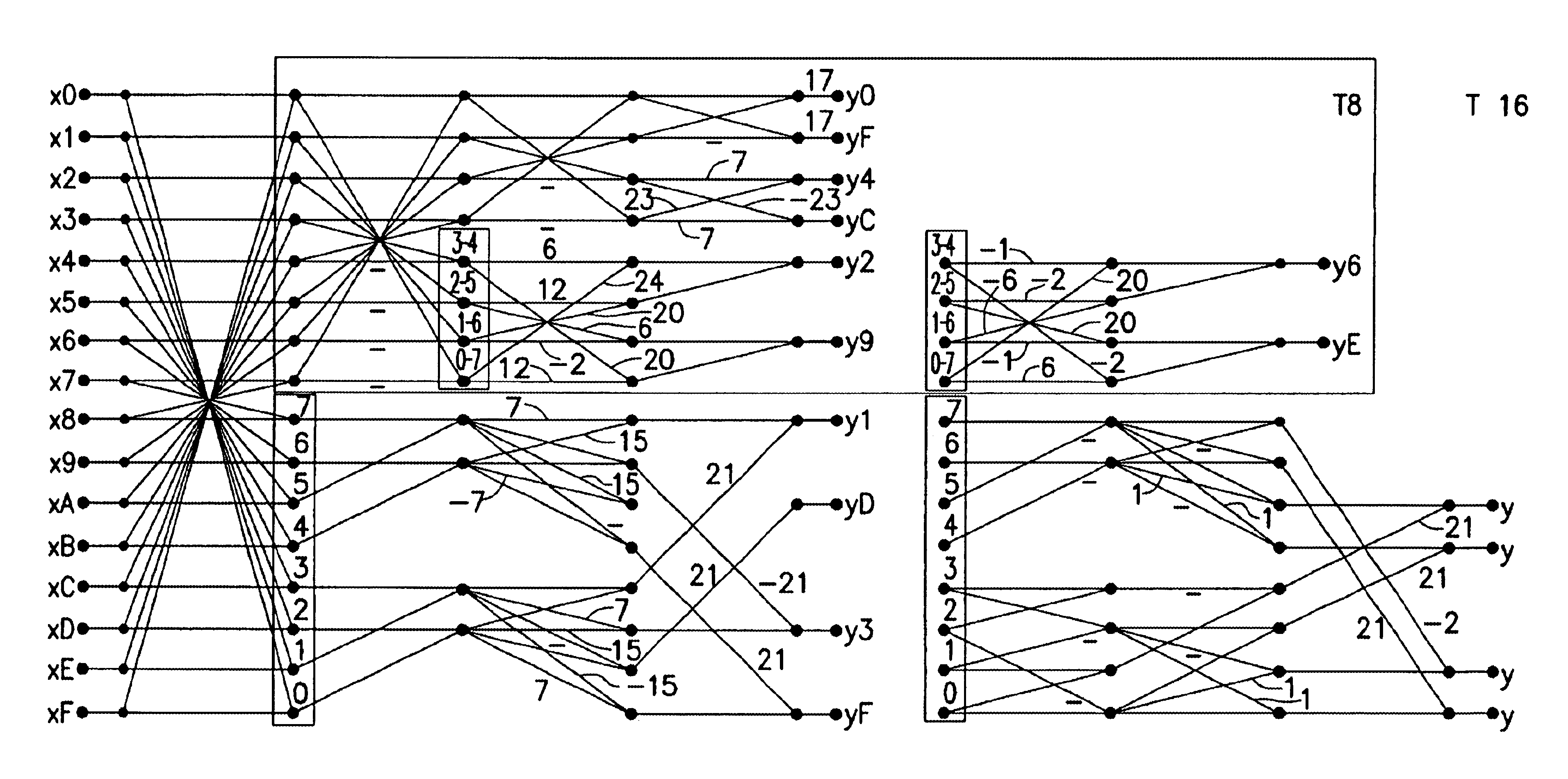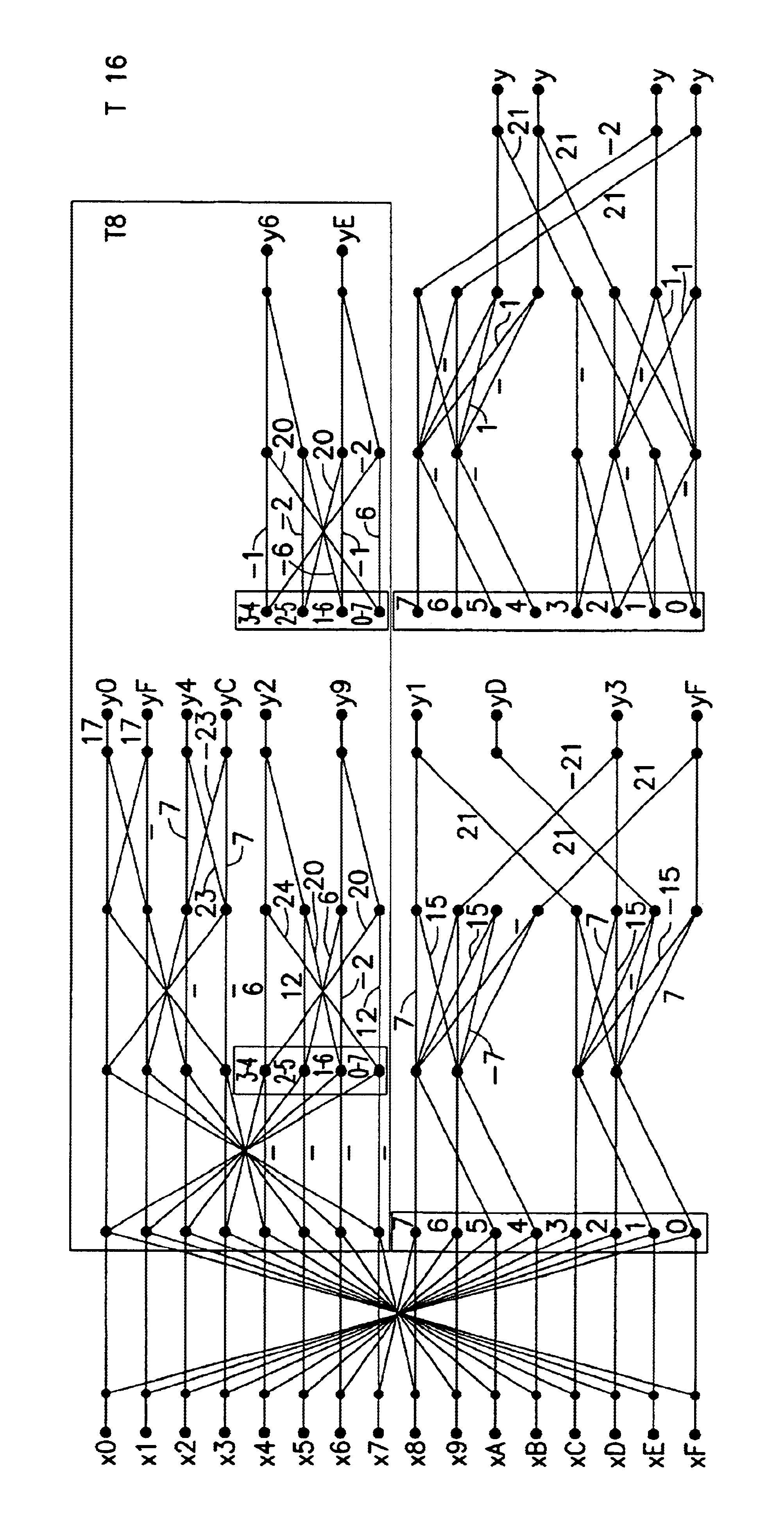Method for carrying out integer approximation of transform coefficients, and coder and decoder
a transform coefficient and integer approximation technology, applied in the field of integer approximation of transform coefficients, coders and decoders, can solve the problem that the matrices do not meet the requirement of orthogonality
- Summary
- Abstract
- Description
- Claims
- Application Information
AI Technical Summary
Benefits of technology
Problems solved by technology
Method used
Image
Examples
Embodiment Construction
Before explaining the actual invention, first a few prerequisites shall be explained.
An orthogonal integer approximation of the N×N DCT must meet the conditions
TN·TNT=kN·IN (1)
TNT·TN=kN·IN (2)
where IN is the unit matrix of the size N×N and kN is an integer constant.
The orthogonal integer transform of the block size 8×8 according to the present invention has the lowest maximum approximation error within the numerical range of the coefficients of 27
emax=max{e(t0),e(t1), . . . ,e(t7)}, (3)
where e (tm)=1-tICT,mk8·tDCT,m,(4)
where tDCT,m and tICT,m, where m=0, . . . , 7, denote the coefficients of DCT and ICT (integer cosine transform) respectively. So far, no suggestions regarding integer approximations of DCT of the block size 16×16 are found in the literature, i.e., transforms that meet the conditions according to equations (1) and (2) for N=16. The integer transform according to the equation meets these conditions so that in contrast with the approach mentioned in [4], all the ba...
PUM
 Login to View More
Login to View More Abstract
Description
Claims
Application Information
 Login to View More
Login to View More - R&D
- Intellectual Property
- Life Sciences
- Materials
- Tech Scout
- Unparalleled Data Quality
- Higher Quality Content
- 60% Fewer Hallucinations
Browse by: Latest US Patents, China's latest patents, Technical Efficacy Thesaurus, Application Domain, Technology Topic, Popular Technical Reports.
© 2025 PatSnap. All rights reserved.Legal|Privacy policy|Modern Slavery Act Transparency Statement|Sitemap|About US| Contact US: help@patsnap.com



